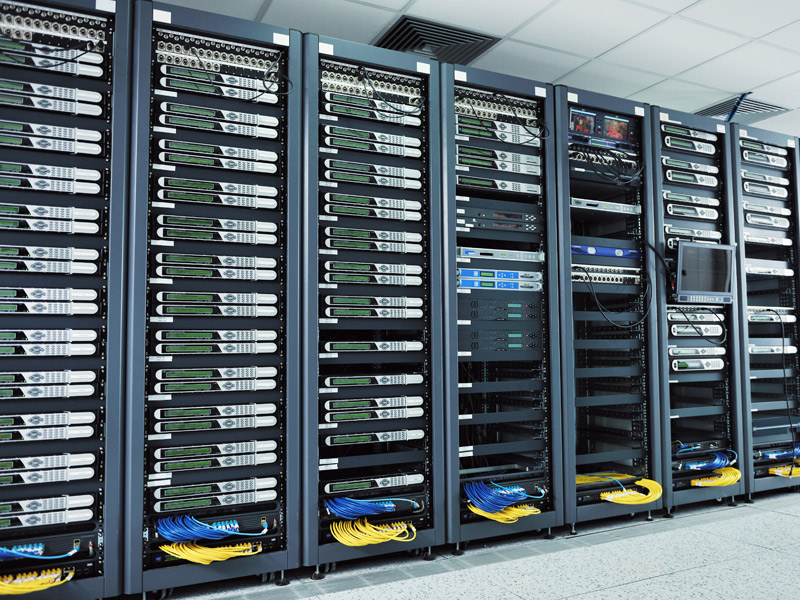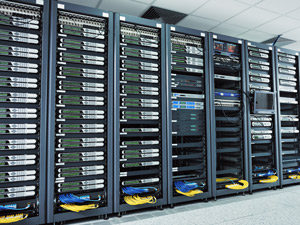
Design | Installation | Maintenance | Automation
24-Hour Emergency Service
Server/IT Room
Businesses need dedicated partners they can trust to take care of their mission-critical infrastructure in data centers. When it comes to hiring a service contractor to service and maintain computer room air conditioning (CRAC) units, you need to hire certified technicians to maximize reliability and ensure product factory warranties are retained. Installing and maintaining the proper HVAC system in computer room or data center is critical to ensuring uptime and system reliability. A report form Gartner Group in late 2003 estimated that the average hourly cost of downtime for a computer network at the time was $42,000. IT has likely gone up dramatically. At these high costs, even companies with 99.9% of uptime lose hundreds of dollars each year in unplanned downtime. Maintaining recommended temperatures and humidity levels in the data center can reduce unplanned downtime caused by environmental conditions and save companies thousands or even millions of dollars per year.
What should be checked quarterly:
- Change air filters
- Blower belt wear and alignment
- Motor sheaves
- Bearings
- Refrigerant levels
- Low ambient accessories
- Fan and blower motors
- Compressors
- Safeties
- Controls
- Humidifier cleaned
Why worry about having the proper HVAC in a server room?
- Undersized equipment will not keep up with the cooling demand. This will up room temperature in a range that could start shutting down servers.
- Oversized equipment will short cycle causing a shorter life span of the equipment.
- Poor air distribution will cause hot spots in the server rooms thus causing some servers to run hotter than needed.
- Low humidity will allow for unsafe static electricity levels in servers.
- High humidity will allow unsafe moisture content for servers.
- Having redundancy in your HVAC equipment will ensure that your company does not experience any inconveniences and loss in revenues when one system is down for repairs.
Common Problems With On-Site Server Rooms
Before attempting to determine how best to establish the most secure yet cost-effective means of storing your data, it’s important to recognize that local server rooms are not inherently disasters waiting to happen. Rather, there are specific common sources of damage that can plague your data that you should make sure to protect. You decide you’re better off migrating your stacks to a shared offsite facility, or you may prefer to keep them in-house – either way, when you address the specific server facility threats that most often destroy data assets, you’re able to dramatically minimize risk. Let’s take a look at some basic best practices for precautions that will help to keep your on-premises data safe and accessible for the needs of your business.
Inadequate Temperature Control
To maintain a secure space for your local servers, you must create the proper physical conditions for them. That includes an area that has proper temperature control. The air surrounding your hardware needs to be in a range that keeps heat from damaging your servers. Typically this is a range of 68 to 72 degrees. Not only must you account for temperature in the server room, but also impact on temperature from outside the room... such as direct sunlight or other factors that may raise temperature. Your servers will generate heat too, and the environment will need cooling that can account for that. Ideally, you need to make sure you’re able to control the room temperature separately from the rest of your facility. Countless servers have been lost to too warm of an environment.Insufficient Ventilation
Similarly, you will want to make sure that there is sufficient space surrounding your equipment for air to circulate. How much of a gap you need depends on the specific parameters of your machinery, but all heat-generating data storage devices (and they all generate heat) require air circulation to make sure they don’t overheat – poor ventilation necessarily results in inadequate cooling. Therefore, if the space you use for your servers is small enough that you need to stack them, make sure to use dedicated server racks, rather than just piling servers up on top of each other.Imbalanced Moisture Levels
Keep in mind that temperature is not the only environmental condition concern that impacts the location and well-being of your servers. Controlled humidity can be at least as important. High humidity can result in rust, corrosion, short-circuiting and even the growth of fungus that can attack the machinery. Too little moisture in the air is also a concern, as an exceedingly dry environment can result in electrostatic discharge, which in turn can cause system malfunction and damage.
Checklist For Designing a New Server Room
Cooling Specifications
- Racks should be arranged in a hot-aisle/ cold-aisle configuration.
- Use cooling equipment with variable speed fans.
- Plan for redundancy; do not rely on building cooling for back-up.
- Under floor cooling systems require a raised floor with a minimum height of 24 inches, with the ability to hold the weight of server racks and equipment.

